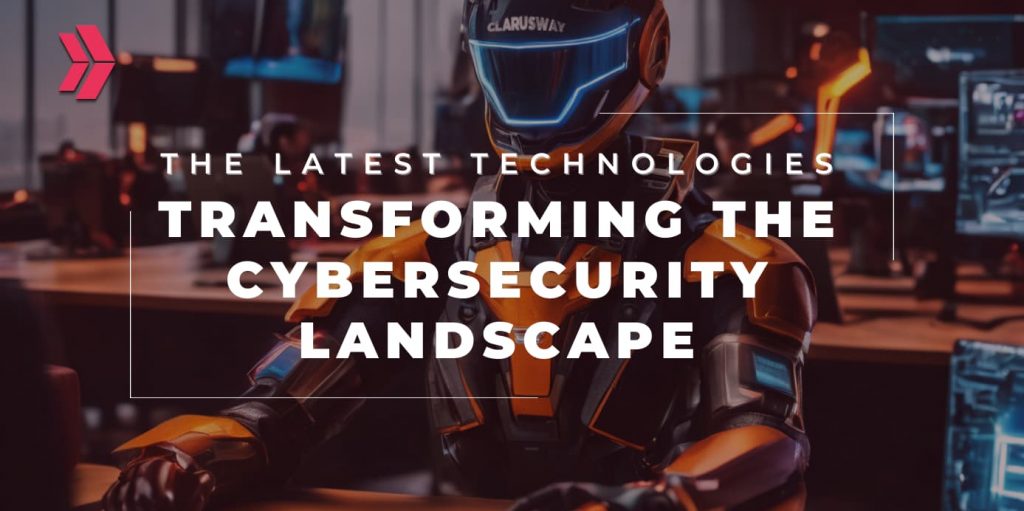Cyber threats are becoming increasingly intricate and complex in today’s rapidly evolving technological landscape. Last year, there was a significant increase in global cyberattacks by 38% compared to the previous year, according to Check Point. As a result, protecting digital assets has become an essential priority.
Cybersecurity ensures the safety of digital systems and networks. In this context, adopting a proactive approach that utilizes the latest cybersecurity technology and tools is imperative to establish robust security measures for emerging threats. Learning cybersecurity and investing in innovative methods enhances the overall security posture.
Cybersecurity training and measures that leverage the best practices and cutting-edge cybersecurity solutions are essential in transforming the cybersecurity landscape. Proper cybersecurity certifications help professionals learn, understand, and adapt to emerging cyber threats and prepare for vital cybersecurity jobs to mitigate and prevent cyber attacks.

What are the Latest Cybersecurity Technologies?
Incorporating cutting-edge cybersecurity technologies is vital in protecting digital assets and reinforcing cybersecurity measures. Here are the top 7 latest cybersecurity technologies:
- Comprehensive threat management
- Artificial intelligence
- Zero trust policy
- Blockchain
- Quantum computing
- Hybrid clouds
- Context-based authentication

Comprehensive Threat Management
Comprehensive threat management is a cybersecurity approach that leverages a combination of tools and strategies to protect against threats. There are 3 main components to this approach: Intrusion Prevention System (IPS), Security Information and Event Management (SIEM), and Extended Detection and Response (XDR).
Firstly, SIEM solutions enhance an organization’s security posture by collecting and analyzing data for real-time monitoring, threat detection, incident response, and compliance reporting. SIEM solutions can help organizations improve security and safeguard their assets from cyber threats.
Secondly, IPS serves as a protective shield between the internal network and any possible threats, providing an effective defense against real-time attacks. It actively tracks network and system activities, continuously identifying and preventing malicious or policy violations using predefined rules to detect and block potential threats, including known vulnerabilities and attack patterns.
Thirdly, XDR is an advanced solution for detecting and responding to cyber threats. It integrates and correlates data from various security layers, including endpoints, email, and servers. Organizations that adopt XDR can implement a more comprehensive and proactive strategy for detecting and responding to sophisticated cyber threats.

Artificial Intelligence
Artificial intelligence (AI) is an advanced field that develops intelligent machines that typically require human intelligence, such as decision-making, problem-solving, and natural language processing. Artificial intelligence has a crucial role in cybersecurity trends, and the size of the artificial intelligence industry in cybersecurity is expected to grow from US$ 22.4 billion to US$ 60.6 billion in the following 5 years, according to Marketsandmarkets 2023 report.
Although used interchangeably, AI systems utilize machine learning and deep learning to process vast data. Artificial intelligence is a broader concept that explains the machines that can imitate human intelligence, such as problem-solving, decision-making, and speech recognition.
Additionally, being a subset of AI, Machine learning enables machines to acquire knowledge and skills from data without explicit programming. By identifying patterns and relationships in complex data sets, ML makes predictions or detects unusual events in the real world.
Similarly, being a subset of ML, Deep learning utilizes neural networks to replicate the human brain’s learning process and to analyze vast amounts of unstructured data.
Zero Trust Policy
Zero trust policy is a rigorous approach focusing on continuous verification and distrust. This security framework ensures that all users, devices, and applications are consistently authenticated, authorized, and validated before accessing network resources. Organizations can minimize the attack surface and improve security by adopting a zero-trust approach.
Several principles make a zero-trust policy indispensable, including micro-segmentation, least privilege, continuous verification, and strict access control measures. These measures help prevent data exfiltration, support regulatory compliance, and increase visibility into all user access.
The zero trust model enhances cloud and container security by providing precise access control and reducing the risk of unauthorized access, lateral movement, insider threats, and data breaches.
Blockchain
Blockchain is a digital ledger that securely processes transactions. The data is stored in blocks linked together through cryptography, creating a chain of information that cannot be altered. Blockchain has several advantages, including enhancing user privacy, reducing human error, and providing greater transparency.
Blockchain technology fortifies cybersecurity by introducing decentralization, ensuring data integrity, facilitating secure transactions, providing selective access, and preventing specific cyber attacks.
Cybersecurity experts can utilize blockchain technology to develop standardized security protocols that can be implemented across different systems and devices. This approach enhances security by creating more obstacles for hackers attempting to access sensitive data stored in databases.
Quantum Computing
Quantum computing is a promising cybersecurity technology that uses quantum mechanics to solve problems faster than classical computers. IBM predicts that the global quantum computing market will exceed US$ 10 billion in 2024.
Quantum computers can quickly solve specific calculations and decode even the most secure encryption codes. As a result, cybersecurity experts are working on developing encryption methods that can withstand quantum threats.
Quantum cybersecurity offers a more effective and reliable way to protect personal and critical data than current methods. It has the potential to provide better opportunities for safeguarding information.
Hybrid Clouds
A hybrid cloud environment combines on-premise and cloud solutions to share applications and data. It is user-friendly and enhances work efficiency. The hybrid cloud market is evaluated to grow from US$ 129 billion in 2023 to US$ 348 billion in the following 5 years, according to the Mordor Intelligence report.
Hybrid and multi-cloud infrastructures are terms used interchangeably to describe cloud models that combine more than one cloud. However, it’s essential to note that a hybrid cloud is a mixture of two or more different clouds, while a multi-cloud involves other clouds of the same kind.
Hybrid clouds reduce costs, increase flexibility, ensure business continuity, and offer numerous advantages for remote work options.
Context-Based Authentication
In cybersecurity, authentication is critical in preventing cyber threats since it allows only authorized users to access. Hackers exposed more than 24 billion passwords last year, according to Digital Shadows. Similarly, Verizon’s 2023 Data Breach Investigations Report revealed that stolen credentials caused 49% of data breaches.
Context-based authentication reduces the risk of unauthorized access by analyzing users’ behavior in the context of factors such as device, network, time, and location. It is an extra layer of security to determine if a user can access a system.
Context-based authentication enhances risk management and eliminates the likelihood of an attacker intercepting the authentication process. This authentication method improves user experience and perfectly balances security and ease of implementation.
Building the Cybersecurity Workforce of the Future
Creating a solid cybersecurity workforce is necessary to protect digital assets. Numerous initiatives and enterprises around the world strive to develop skilled professionals to shape the future of cybersecurity.
The demand for cybersecurity jobs is currently high and predicted to continue in the long run. The global cybersecurity workforce has witnessed a 9% surge this year compared to 2022. However, during the same period, the workforce gap in cybersecurity has widened to 13%, according to the 2023 ISC2 Cybersecurity Workforce Study. These statistics suggest that there is still a considerable demand for skilled experts in the cybersecurity field.
To establish a resilient cybersecurity workforce in the future, professionals should adopt a collaborative and comprehensive approach that covers diverse aspects of cybersecurity to address emerging threats.
What is the Importance of Cybersecurity Training in Today’s Digital World?
Cybersecurity training is important in today’s digital landscape to protect against cyber threats that are constantly changing. Cybersecurity Ventures’ 2023 Official Cybercrime Report projects that the worldwide cost of cybercrime will escalate to US$ 9.5 trillion by 2024. Consequently, professionals and decision-makers must pay extra attention to the cyber security importance.
Investing in training is imperative to shape the future of cybersecurity and bridge the skills gap. Additionally, cybersecurity training ensures compliance with the regulations and laws. Training also promotes a culture of security awareness.
What’s the Right Cybersecurity Path for Your Career?
Cybersecurity is no longer limited to the IT industry. It has expanded to other sectors, including finance, education, e-commerce, and healthcare, providing numerous job opportunities.
Embarking on a career in cyber security presents many options, ranging from entry-level to senior positions, that align with interests, skills, or experience. Choosing the right cybersecurity career path is crucial for a successful professional life.
Professionals can choose various career paths, including analysis, testing, consultation, incident response, engineering, architecture, and management roles.
What Certifications are Required for a Cyber Security Career?
Cybersecurity certifications provide a comprehensive understanding of industry standards, validate expertise in the field, and increase the value in the job market. Certifications come in varying difficulty levels and expertise, allowing individuals to select based on their experience and career aspirations.
Globally recognized certifications make their holders stronger. For instance, 81% of employers prefer to hire professionals with certifications, according to the Fortinet 2022 Cybersecurity Skills Gap Global Research Report.
In the decision-making process, professionals should consider the type of cybersecurity certifications, whether offensive or defensive, their level of knowledge, and the specific area in which they want to work.
In Conclusion
Advanced technologies significantly impact the constantly changing cybersecurity landscape. While emerging technologies introduce new challenges, innovative tools can also improve defense mechanisms for a secure environment. The transformative impact of these latest technologies emphasizes the dynamic nature of cybersecurity, which necessitates continuous adaptation and resilience to prevent and preempt cyber threats. Therefore, with proper training and a skilled workforce, leveraging the latest technologies could transform and shape the future of the cybersecurity landscape to protect sensitive digital assets.
Last Updated on January 8, 2024




